Food in Maldives tastes simple and comes straight from the ocean. People here cook what the ocean gives each day. Fish, coconut, and rice fill most plates. The taste stays gentle, but there is warmth from soft spices. It’s not just about eating. It’s sitting outside, feeling sea air, and sharing food that locals grew up with. Visitors love that Maldivian Honeymoon Packages food keeps old ways alive yet still feels fresh. Some dishes stay mild, some bring a quiet heat. But each feels part of the islands. This blog shares what to try, so you don’t miss the real heart of Maldivian cuisine.
1. Mas Huni – Classic Maldivian Breakfast
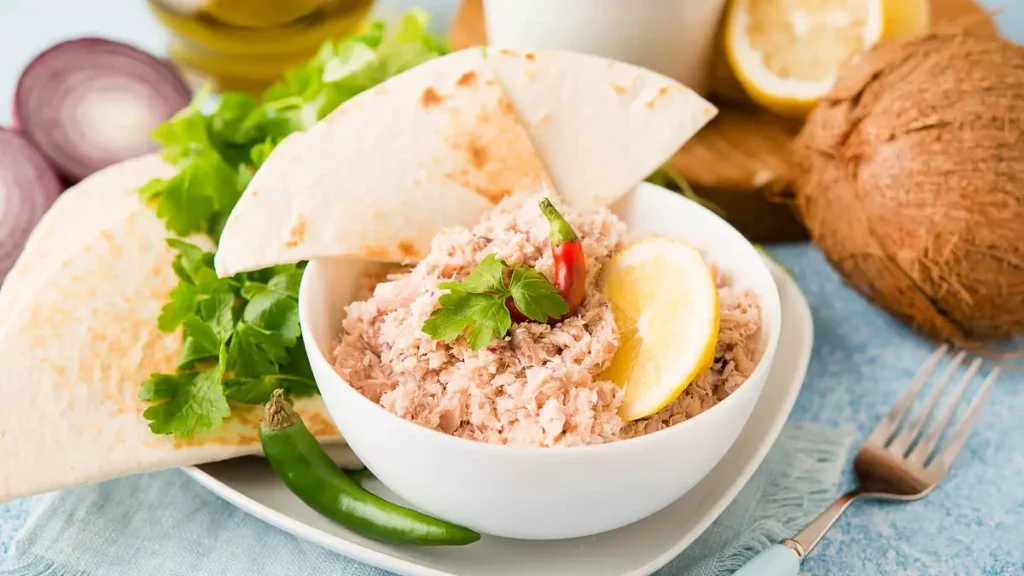
Locals eat Mas Huni most mornings. It’s tuna mixed with fresh coconut, onion, and chilli. The taste is soft and a bit salty. People eat it with flatbread called roshi. Sometimes there’s tea on the side. What makes it special is how fresh the fish is. It often comes straight from the sea that day. Mas Huni isn’t fancy. It feels homely and calm. Visitors love it because it shows the true heart of Maldivian food. It’s part of daily life. Eating it by the water makes you feel closer to the islands. That’s why it’s a must when trying Food in Maldives.
2. Garudhiya – Fragrant Fish Soup
Garudhiya is a light fish soup, locals eat most days. It’s made by boiling fresh tuna with water and salt with curry leaves over it. The soup tastes a bit salty. People pour it over rice. Some squeeze lime on top or add chilli. What makes Garudhiya special is how fresh it feels. The fish often comes straight from the sea that morning. It’s not fancy, but it feels warm and homely. Visitors like it because it shows the real heart of Maldivian food. It’s a calm and everyday taste of Food in Maldives.
3. Fihunu Mas – Grilled Fish with Spice
Fihunu Mas is fresh fish grilled with local spice paste.Tuna or reef fish is used by locals, coated with chilli, lime, and curry leaves, then cooked over hot coals. The taste is left smoky, spicy, and full of sea flavour. The outside turns a little crisp, but inside stays soft. People often eat it with roshi or rice. What makes it special is how simple it is, fish caught the same day, grilled by hand. Visitors love it because it feels real and bold, not fancy. Trying Fihunu Mas shows why Food in Maldives tastes so fresh. It’s a true piece of Maldives seafood and part of local island life.
4. Hedhikaa – Maldivian Short Eats & Snacks
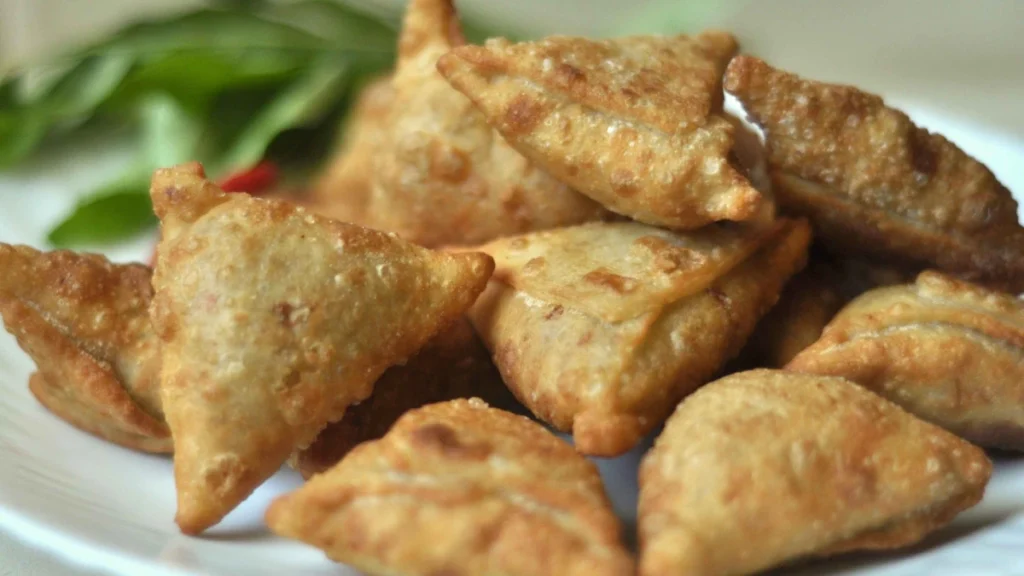
Hedhikaa means small fried or baked snacks you see everywhere in Maldives. Locals eat them in the afternoon with tea. There are many types: fish rolls, tuna patties, little pastries filled with coconut or chilli tuna. The taste is warm, soft inside, sometimes crispy outside, and often a bit spicy. What makes Hedhikaa special is how locals share them. Friends sit together, drink black tea, and talk over plates of these bites. Visitors love them because it feels real, everyday Maldives street food. Eating Hedhikaa shows the relaxed side of Maldivian food, where it’s more about time spent together than just the snack itself.
5. Kulhi Boakibaa – Spicy Fish Cake
Kulhi Boakibaa is a thick baked cake made with tuna, rice, coconut, and chilli. Locals cut it into squares and eat it warm or cold. The taste feels soft, a bit spicy, and slightly sweet from the coconut. The outside turns firm while inside stays moist. What makes it special is how simple and filling it is. It is often served at tea time or on special days. It is liked by visitors because it isn’t heavy but still feels rich in flavour. By trying Kulhi Boakibaa, the mix of sea, local rice, and coconut in Food in Maldives is seen by travellers. It is felt as a part of Maldivian cuisine that stays homely and warm.
6. Bis Keemiya – Maldivian Samosa
Bis Keemiya is like a small samosa locals love.Cabbage, tuna, onion, and sometimes egg are filled inside. Then it gets fried till it turns crispy and warm. Inside, the taste stays mild, a bit salty, and soft. It’s often served with tea in the late afternoon. What keeps it special is how simple it stays. Nothing fancy, just fresh filling wrapped up and fried. Visitors like it because it feels real, like true Maldives street food. Eating Bis Keemiya shows the homely side of Maldivian food. It’s small, easy to share, and part of daily island life.
7. Rihaakuru – Rich Fish Paste
Rihaakuru is a thick, dark paste made by cooking tuna for hours until it turns smooth and rich. Locals spread it on roshi or mix it with rice. The taste feels salty, deep, and a bit smoky. It’s strong, so people use it only a little. What makes Rihaakuru special is how long it takes to make. It’s cooked slow, sometimes all day, so the flavour turns bold and real. Visitors might find it different at first, but it shows the heart of Maldivian food. Eating Rihaakuru helps travellers taste a piece of daily island life that’s been loved for years. It’s a true part of Maldivian cuisine that feels honest and home-cooked.
8. Maldivian Lobster – Fresh and Grilled
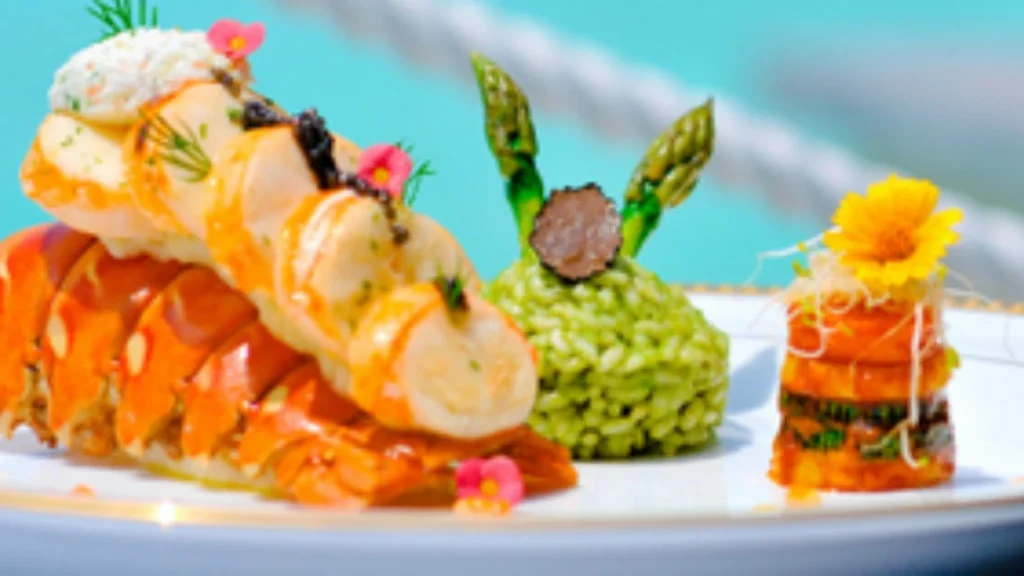
Maldivian Lobster comes fresh from the sea. Locals grill it with a bit of lime and butter. The taste stays sweet and soft. The outside gets a light smoky touch. People love it because it feels real, not covered in heavy sauce. The meat feels tender and breaks easily. What makes it special is how fresh it is. Many times the lobster is caught the same day. Visitors see why Food in Maldives keeps things simple. It’s true Maldives seafood, cooked plain so you taste the sea. That’s what makes it feel close to the islands.
9. Roshi – Maldivian Flatbread
Roshi is soft flatbread that locals eat every day. It’s just flour, water, and a bit of salt. The taste is plain but warm. People tear it and dip it in curry or eat it with fish. Sometimes they have it with tea. What makes it special is how it goes with everything. It soaks up sauce and calms spicy food. Visitors like it because it feels homely and real. Eating Roshi shows why Food in Maldives stays simple. It’s part of daily life and true Maldivian food.
10. Boshi Mashuni – Banana Flower Salad
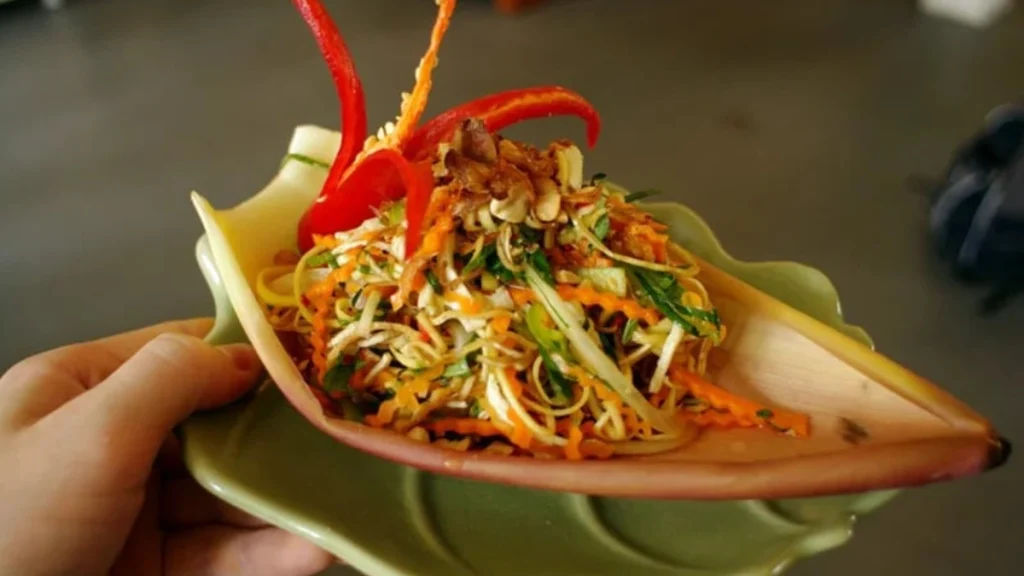
Boshi Mashuni is a salad locals make with banana flowers. They mix it with coconut, onion, lime, and a bit of chilli. The taste feels fresh, crunchy, and a little sour. People eat it with roshi or rice. What makes it special is how light it feels but still has flavour. Visitors like it because it shows that Food in Maldives isn’t just fish. It also uses local plants. Boshi Mashuni feels homely and simple. It’s part of daily Maldivian food, shared at family tables.
11. Saagu Bondibai – Sago Pudding
Saagu Bondibai is a sweet dish locals make with sago and coconut milk. It feels soft and creamy, with a bit of stickiness when you eat it. The taste is gentle and sweet, sometimes carrying a hint of cardamom. People often enjoy it after lunch or on days that feel special. What makes it loved is how simple it stays, just sago, sugar, and coconut cooked slowly until it turns smooth. Many visitors like it because it feels light yet warm. Trying Saagu Bondibai shows the softer, homely side of Food in Maldives. It’s a quiet part of Maldivian cuisine that brings comfort.
12. Aluvi Boakibaa – Sweet Cassava Cake
Aluvi Boakibaa is a soft cake locals bake with cassava, coconut, and sugar. The top turns golden, but inside stays moist. The taste feels mild and sweet, with a bit of coconut smell. People eat it with tea, often in the afternoon. What makes it special is how simple it is. Just local roots and coconut, baked slowly. Visitors like it because it feels homely, not fancy. Shows how Food in Maldives uses what grows here. It’s part of daily Maldivian food, shared at home.
13. Maldivian Curry – Fish, Chicken & Vegetable
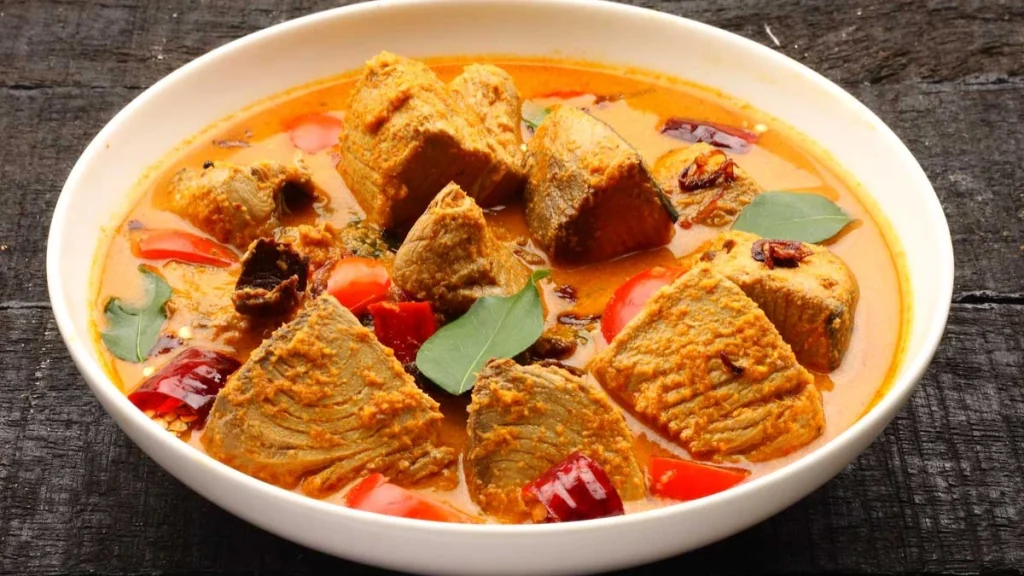
Maldivian curry feels mild and warm. Locals make it with tuna, chicken, or veggies. Coconut milk makes it creamy. Spices stay soft, not too hot. People eat it with rice or roshi. What’s special is the fresh fish caught that day. Visitors like it because it tastes homely and light. Shows why Food in Maldives feels simple and real. It’s part of daily Maldivian food cooked at home.
14. Kavaabu – Deep Fried Tuna Snack
Kavaabu is a fried snack locals make with tuna, rice, and coconut. Shaped into small balls, then fried till golden. Outside feels crisp, inside stays soft. The taste is mild, a bit spicy. People eat it with tea or as a quick bite. What’s special is how simple it is. Just fresh fish and local stuff. Visitors like it because it’s true Maldives street food. Shows why Food in Maldives feels homely. It’s part of daily Maldivian food, not fancy, just real.
15. Dhon Riha – Mild Tuna Curry
Dhon Riha is a soft tuna curry locals eat often. Made with fresh tuna, coconut milk, and gentle spices. The taste feels mild, warm, and a bit creamy. People eat it with rice or roshi. What makes it special is the fresh fish, often caught that day. It’s not too hot, so anyone can try. Visitors like it because it shows the calm side of Food in Maldives. It’s part of daily Maldivian food, cooked at home and shared with family.
Tips for Food Lovers Visiting Maldives
- Eat at small local cafés. That’s where true Maldivian food feels homely.
- Go early. Many places close right after sunset.
- Always ask if it’s spicy. Looks can trick you.
- Try fresh Maldives seafood, but make sure it’s cooked well.
- Street snacks like Hedhikaa taste best in the late afternoon with tea.
- Don’t eat fish? Ask for veggie curry, roshi, or banana flower salad.
- Local sweets show the softer side of Maldivian cuisine.
Food in Maldives feels fresh and simple. It’s more than taste. It’s eating by the sea, with warm air around you. Locals love spicy fish, soft bread, and sweet coconut dishes. Visitors see real island life through these meals. It’s not fancy food. It’s homely and honest. Trying Maldivian food helps you feel the true heart of the islands. That’s why tasting it matters.
People Also Ask about Maldives
Q.1 Which are the best restaurants to eat in Maldives?
Reethi Restaurant feels special because of its ocean view and mix of world dishes. Muraka sits on the water and serves fresh meals with a simple island taste. Ithaa Underwater Restaurant is the most known, you sit under the sea and watch fish swim by as you eat. Each place shows a different side of Food in Maldives.
Q.2 Which are the best places in Maldives to enjoy seafood?
Jazz Cafe in Male feels lively and has good seafood plates. The Sea House has fresh fish curry and roshi right by the water. Ithaa Underwater Restaurant also serves lobster and fresh fish dishes, all with sea views around you. These places show why people love Maldives seafood.
Q.3 Which are the best places to eat Indian food in Maldives?
Bombay Darbar in Hulhumale cooks real curries and biryani. Symphony Restaurant in Male serves both North and South Indian meals. Tandoori Flames have naan, tikkas, and sweets like gulab jamun. These spots keep the taste of Indian food alive in the islands.
Q.4 Which are the best underwater restaurants to eat in Maldives?
Ithaa Underwater Restaurant sits under the sea, so you can see fish all around. The SEA at Anantara Kihavah has glass walls and lots of wines. Minus Six Metres at OZEN by Atmosphere is deeper and feels quiet, with seafood and island meals. Eating here shows a special side of Maldivian food.
Q.5 Is vegetarian food easy to find in Maldives?
Yes. Many cafés and Indian places serve veggie curry, roshi, and salads. You can also ask for no fish in many local spots. Food feels fresh, mild, and part of daily Maldivian cuisine.
Q.6 What dish should first-time visitors try?
Mas Huni. It’s tuna, coconut, onion, and lime, eaten with roshi. Light, fresh, and feels like a true island breakfast.
Q.7 Where to try real Maldives street food?
Small tea shops in Male and Hulhumale in the late afternoon. Locals go there for Hedhikaa snacks like Kavaabu and Bis Keemiya. Simple, warm, and shows daily life.





